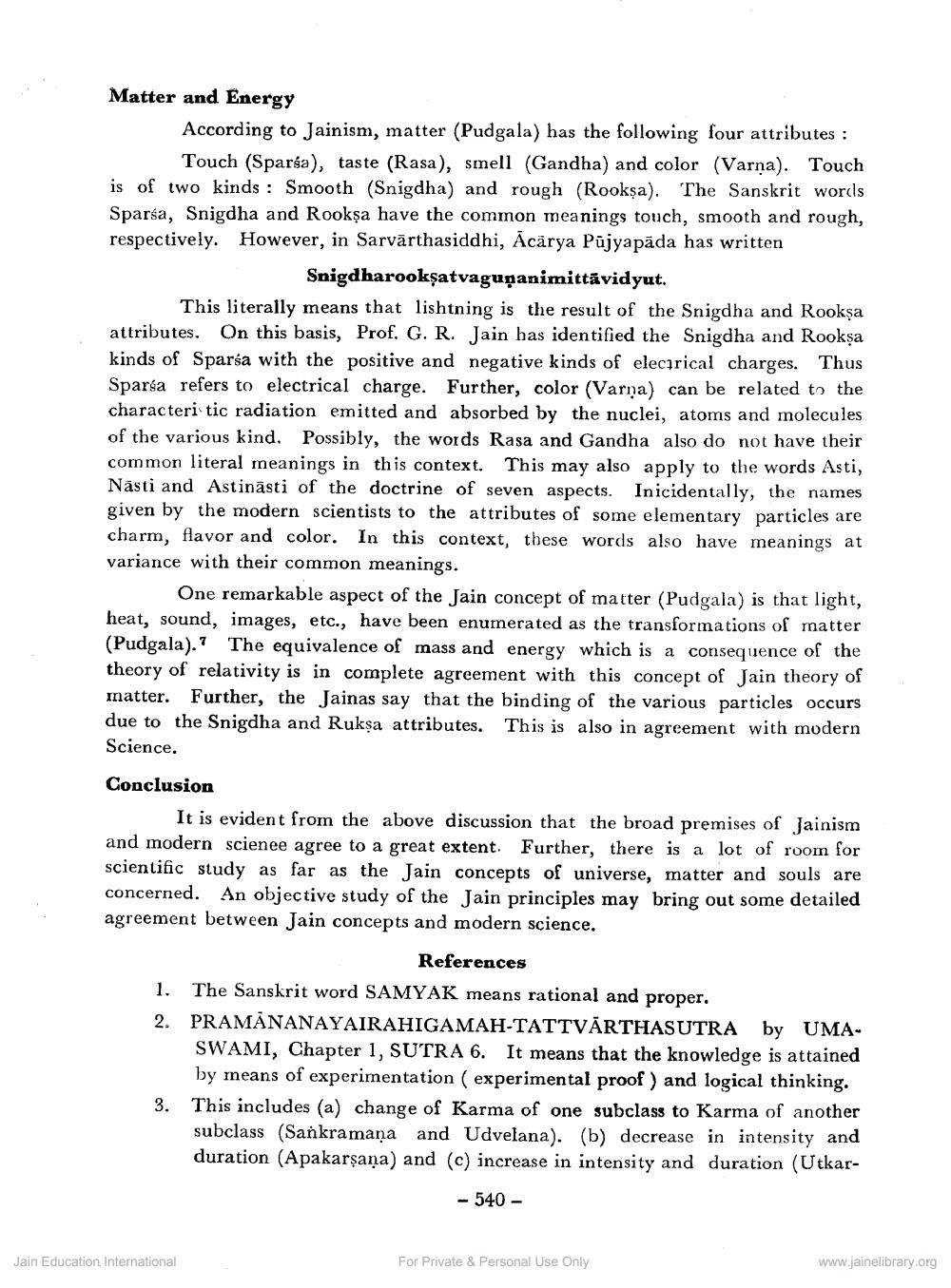Book Title: Jainism and Modern Science Comparative Study Author(s): Dulichand Jain Publisher: Z_Kailashchandra_Shastri_Abhinandan_Granth_012048.pdf View full book textPage 7
________________ Matter and Energy According to Jainism, matter (Pudgala) has the following four attributes: Touch (Sparta), taste (Rasa), smell (Gandha) and color (Varna). Touch is of two kinds: Smooth (Snigdha) and rough (Rooksa). The Sanskrit words. Sparta, Snigdha and Rooksa have the common meanings touch, smooth and rough, respectively. However, in Sarvärthasiddhi, Acarya Pujyapāda has written Snigdharooksatvagupanimittävidyut. This literally means that lishtning is the result of the Snigdha and Rookşa attributes. On this basis, Prof. G. R. Jain has identified the Snigdha and Rookṣa kinds of Sparia with the positive and negative kinds of electrical charges. Thus Sparia refers to electrical charge. Further, color (Varna) can be related to the characteristic radiation emitted and absorbed by the nuclei, atoms and molecules of the various kind. Possibly, the words Rasa and Gandha also do not have their common literal meanings in this context. This may also apply to the words Asti, Nästi and Astinasti of the doctrine of seven aspects. Inicidentally, the names given by the modern scientists to the attributes of some elementary particles are charm, flavor and color. In this context, these words also have meanings at variance with their common meanings. One remarkable aspect of the Jain concept of matter (Pudgala) is that light, heat, sound, images, etc., have been enumerated as the transformations of matter (Pudgala). The equivalence of mass and energy which is a consequence of the theory of relativity is in complete agreement with this concept of Jain theory of Further, the Jainas say that the binding of the various particles occurs due to the Snigdha and Ruksa attributes. This is also in agreement with modern Science. Conclusion It is evident from the above discussion that the broad premises of Jainism and modern scienee agree to a great extent. Further, there is a lot of room for scientific study as far as the Jain concepts of universe, matter and souls are concerned. An objective study of the Jain principles may bring out some detailed agreement between Jain concepts and modern science. References 1. The Sanskrit word SAMYAK means rational and proper. PRAMANANAYAIRAHIGAMAH-TATTVÄRTHASUTRA 2. by UMASWAMI, Chapter 1, SUTRA 6. It means that the knowledge is attained by means of experimentation (experimental proof) and logical thinking. 3. This includes (a) change of Karma of one subclass to Karma of another subclass (Sankramana and Udvelana). (b) decrease in intensity and duration (Apakarṣana) and (e) increase in intensity and duration (Utkar - 540 - Jain Education, International For Private & Personal Use Only www.jainelibrary.orgPage Navigation
1 ... 5 6 7 8
